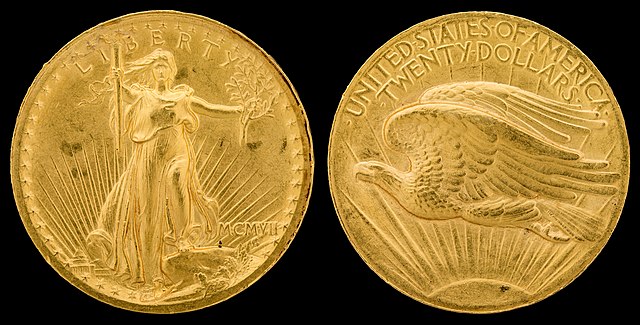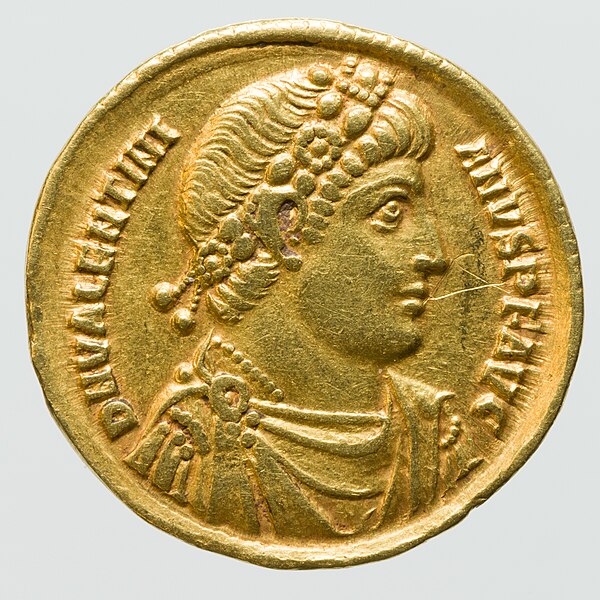A double eagle is a gold coin of the United States with a denomination of $20. The coins are 34 mm × 2 mm and are made from a 90% gold and 10% copper alloy and have a total weight of 1.0750 troy ounces.
The 1849 Liberty Head design by James B. Longacre
The 1907 high relief double eagle designed by Augustus Saint-Gaudens
Side of the 1907 "high relief" double eagle showing edge lettering and surface detail
The Smithsonian specimen of the 1933 Saint-Gaudens double eagle
A gold coin is a coin that is made mostly or entirely of gold. Most gold coins minted since 1800 are 90–92% gold (22‑karat), while most of today's gold bullion coins are pure gold, such as the Britannia, Canadian Maple Leaf, and American Buffalo. Alloyed gold coins, like the American Gold Eagle and South African Krugerrand, are typically 91.7% gold by weight, with the remainder being silver and copper.
Gold coins for sale at the Dubai Gold Souk
Persian Achaemenid Daric, c. 490 BC
Gold Solidus of Roman Emperor Valentinian II
A 20-crown gold coin from Norway. Introduced in 1875, it became part of the Scandinavian Monetary Union, which was based on a gold standard. Norwegian gold reserves included tonnes of this and other coins, backing Norway's paper money. The coin was designed for circulation: "124 Stk. 1 Kil. f. G." means that 124 pieces gave one kilogram of pure gold.








